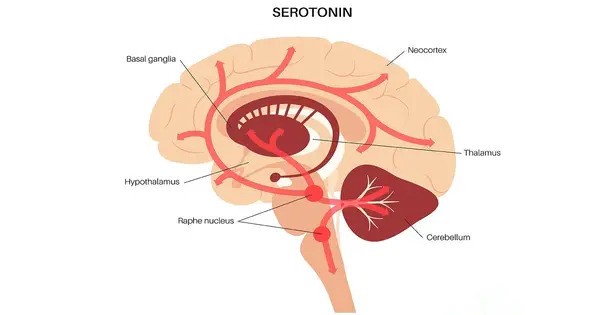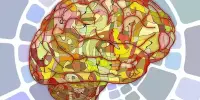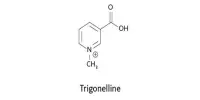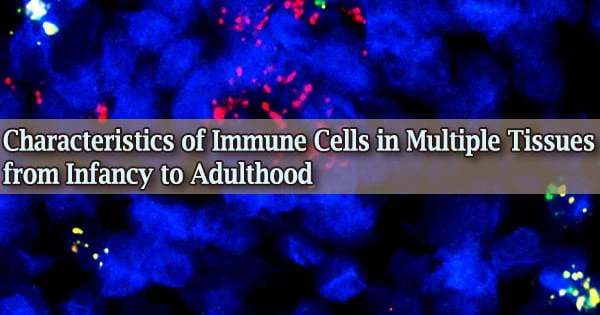Signals in our brain are not always processed in the same manner; certain receptors influence these pathways, altering our mood, perception, and behavior in a variety of ways. One of these is the 5-HT2A receptor, which has a recently found unique feature: it dampens incoming visual input, freeing up space in our brain for internal processes and interpretation. This research may also help explain the effects of medications such as LSD. When this receptor is overactivated, the brain suppresses external sensory input and instead generates more internally driven imagery.
A serotonin-specific receptor influences how important visual inputs are evaluated. This clarifies the effects of some medications and may aid in the understanding of psychiatric illnesses.
Our brain does not always process signals in the same manner. Certain receptors regulate these pathways, altering our mood, perception, and behavior in a variety of ways. One of these is the 5-HT2A receptor, which has a recently found unique feature: it dampens incoming visual input, freeing up space in our brain for internal processes and interpretation. This discovery by a study team from Ruhr University Bochum, Germany, may potentially assist explain the effects of substances such as LSD. When this receptor is overactivated, the brain suppresses external sensory input and instead generates more internally driven imagery.
“It’s a bit like our brain is increasingly talking to itself,” explains Professor Dirk Jancke. The findings, published in the journal Nature Communications, provide new insights into our understanding of perception and psychiatric disorders.
The situation is particularly tricky because these receptors can be both inhibitory and activating. Additionally, they are expressed in different cell types, which in turn have mutual inhibitory or excitatory effects on the entire network.
Dirk Jancke
In the jungle of serotonin receptors
Receptors mediate the transmission of information between nerve cells. The release of serotonin alters nerve cell activities throughout the brain. At least 14 types of serotonergic receptors can be distinguished. “The situation is particularly tricky because these receptors can be both inhibitory and activating,” says Dirk Jancke. “Additionally, they are expressed in different cell types, which in turn have mutual inhibitory or excitatory effects on the entire network.”
Using light against the darkness in the brain
Investigating the impact of receptors in the brain is thus not an easy undertaking. Conventional pharmacological approaches for determining the function of receptors on the neural network are limited. They are frequently not particular enough and, more importantly, work on a slower timetable. Professor Stefan-Herlitze’s research group has thus devised other ways. Light-sensitive receptor proteins are delivered into nerve cells via viruses. Light-sensitive receptor proteins are genetically engineered so that they can perform the tasks of a specific receptor type. This permits the designated receptor type to be turned on and off accurately and within milliseconds, similar to a light switch. Ultra-thin optical fibers are implanted in mice to provide light of the chosen wavelength to the appropriate brain region under LED control.
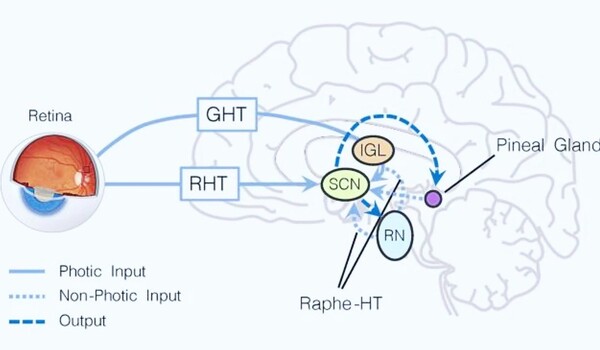
5-HT2A receptors regulate sensitivity to sensory input
Through this method, the researchers discovered that the 5-HT2A receptor selectively suppresses the strength of incoming visual information. “Surprisingly, this happens without inhibiting other parallel processes,” reports Dr. Ruxandra Barzan, the study’s lead author. Thus, the brain reduces the importance of current sensory input in favor of internal communication and interpretation processes. “This means that we’ve discovered a mechanism that regulates how much importance is attached to incoming information,” says Ruxandra Barzan.
Understanding hallucinations, developing therapeutic approaches
Hallucinations induced by drugs like LSD could therefore be interpreted as a form of self-dialogue, according to Dirk Jancke. “Through overactivation, the 5-HT2A receptor suppresses external sensory-driven activity, and the brain creates perception independent of external stimuli.”
Serotonin activates multiple receptor types at the same time in a healthy brain, ensuring that information flows in a balanced manner. This balance can be thrown off by psychiatric illnesses. The researchers anticipate that their current results may help to design novel medicines that activate particularly selected receptors at low dosages to restore such balance. Psychedelic medicines that selectively target the 5-HT2A receptor, for example, could be utilized for therapeutic purposes under medical supervision and in controlled learning environments to correct for long-term aberrant imbalances in receptor activation.
Artificial Intelligence meets neurobiology
To better comprehend the complicated interactions between different cell types and receptors in the brain, the researchers employed computer models that simplify important aspects of neural circuitry. They investigated the idea that the receptor only exhibits the observed effects when activated concurrently in inhibitory and excitatory nerve cells. The model supported this hypothesis. The research group led by Professor Sen Cheng discovered in their simulations that only simultaneous receptor activation in inhibitory and excitatory cells results in network interactions that mimic the experimental findings.
